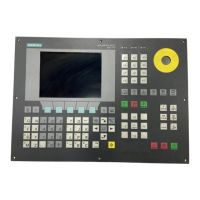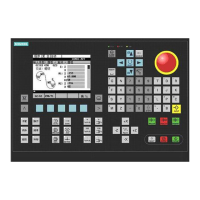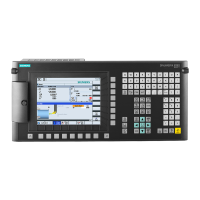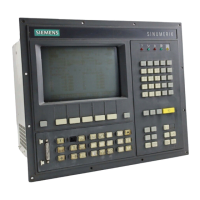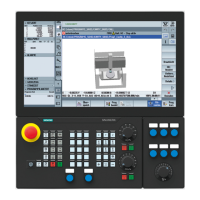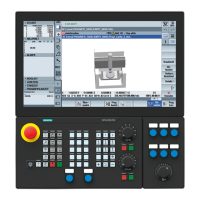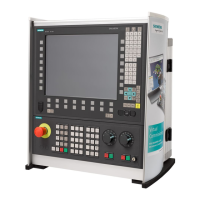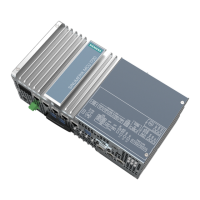Start-Up
4.3 Starting up the PLC
4-51
SINUMERIK 802C
6FC5 597–3AA20–0BP2 (01.02)
4.3.2 Start–up modes of the PLC
The PLC can activate its start–up modes from two places.
Table 4-4 Start–up modes
Start–Up Switch Operator Panel
Start Up Menu
PLC Program
Selection
Program
Status
Retentive Data
(Backed–
Up)
MD for the
PLC in the
User Interface
NCK start–up *
Normal power–up
Position 0
Normal power–up User program Run Unchanged Accept active
PLC MD
Power–up with
default values
Position 1
Power–up with default
values
User program Run Deleted Standard PLC
MD
Power–up with
saved data
Position 3
Power–up with saved
data
User program Run Saved data Saved
PLC MD
PLC Stop
after POWER ON
Position 4
Unchanged Stop Unchanged Accept active
PLC MD
PLC start up **
Restart User program Run Unchanged Accept active
PLC MD
Restart
and debug mode
User program Stop Unchanged Accept active
PLC MD
Restart with simulation Simulation pro-
gram
Run Unchanged Accept active
PLC MD
Overall reset User program Run Deleted Accept active
PLC MD
Overall reset and de-
bug mode
User program Stop Deleted Accept active
PLC MD
* Diagnosis/Start up / Start up switch / NCK softkey ** Diagnosis/Start up / Start up switch / PLC softkey
The start–up switch PLC Stop can be activated either during operation or power–up.
The debug mode (see “Operation and Programming”, Chapter 7) causes the PLC to remain in
PLC Stop after the control system has powered up. All power–up modes that have been set
either via softkeys or via hardware start–up switches will only come into effect after the next
power–up of the control system. The hardware start–up switch “PLC STOP” (position 4) is
active immediately. The priority of the power–up modes activated via the softkeys on the ope-
rator panel is higher than that of the hardware start–up switches.
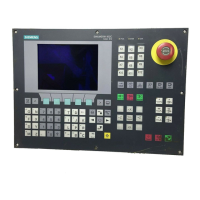
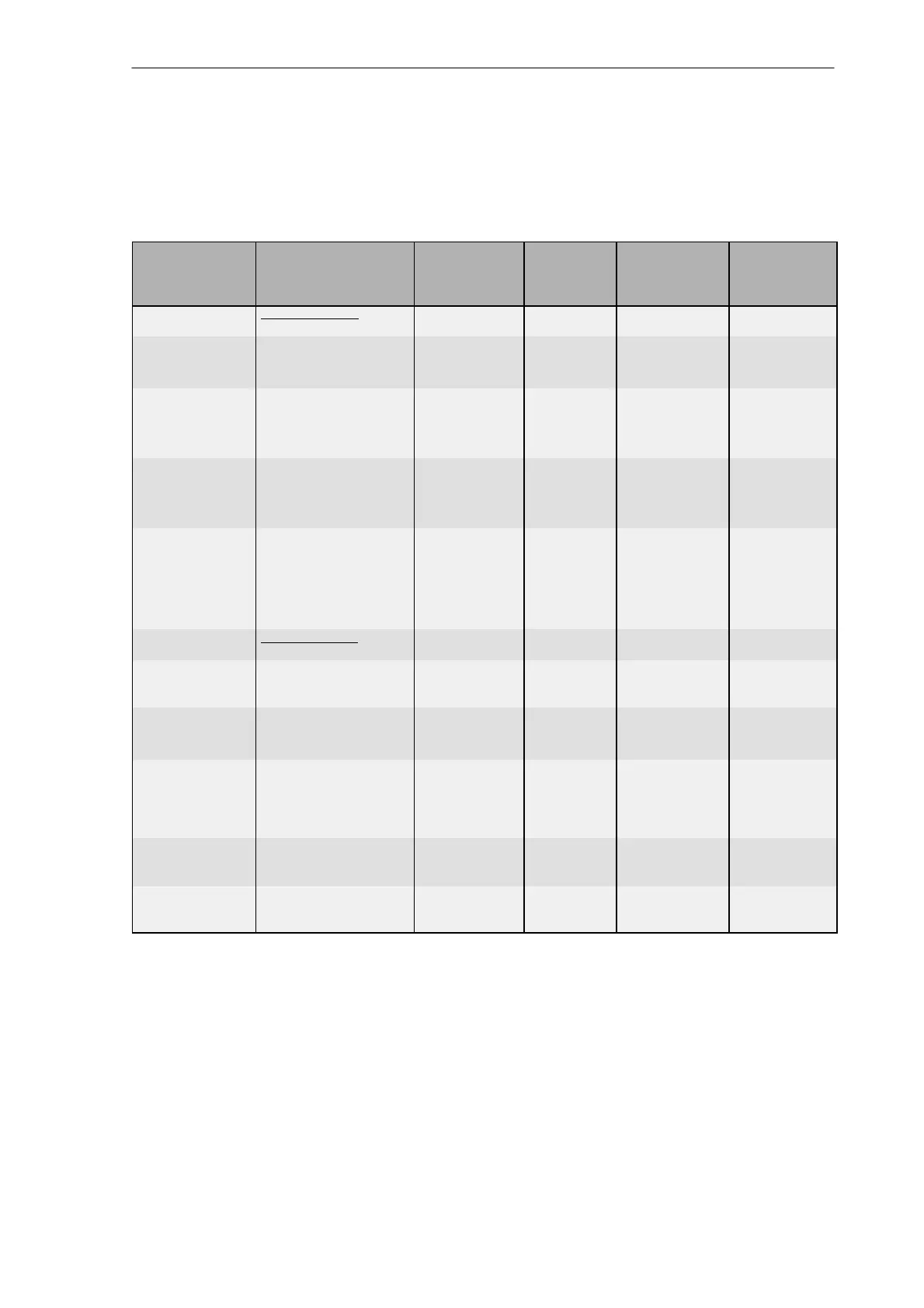